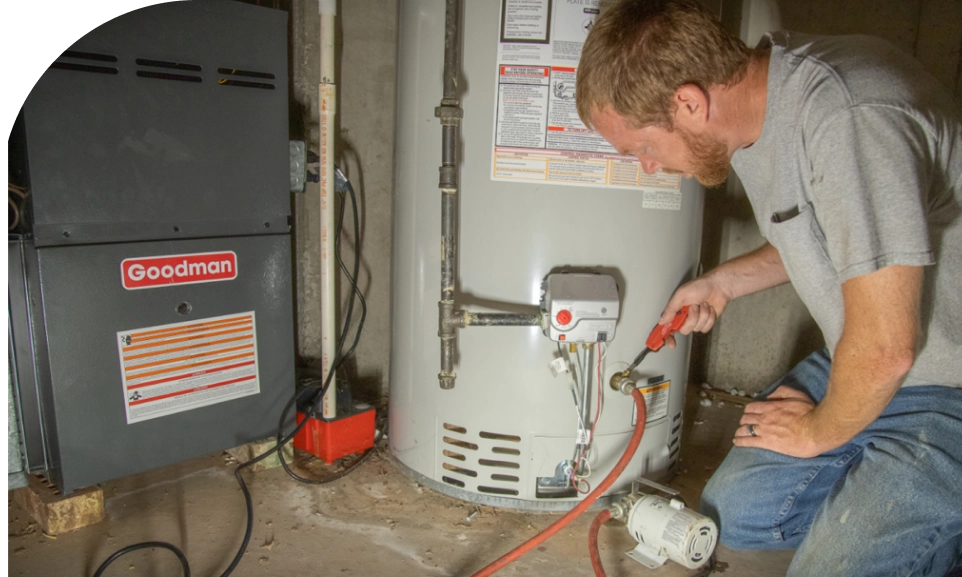
Water Heater Maintenance Tips for a Long-Lasting System
Philadelphia’s Water Heater Repair & Installation Experts
A water heater is a valuable appliance in any home, providing hot water for cooking, cleaning, and bathing. To keep it running efficiently and ensure a long lifespan, regular maintenance is essential. Here are some key maintenance tips from our team at Goodman Plumbing that homeowners can follow to help extend the life of their water heaters.
1. Flush the Tank Annually
Over time, sediment builds up at the bottom of the water heater tank, especially in areas with hard water. This buildup can reduce efficiency and lead to corrosion, shortening the lifespan of the unit. Flushing the tank at least once a year removes this sediment, helping the heater operate more efficiently. To do this, turn off the water and power supply, connect a garden hose to the tank’s drain valve, and let the water drain out. Once it’s clear of sediment, close the valve and refill the tank.
2. Check the Anode Rod
The anode rod is a metal rod inside the tank that helps prevent corrosion by attracting corrosive elements in the water. Over time, this rod wears down, and if it isn’t replaced, it can no longer protect the tank from rust and corrosion. Homeowners should check the anode rod every two to three years, and if it looks heavily corroded or is less than half an inch thick, it’s time to replace it. A new anode rod is a small investment that can significantly extend the life of the water heater.
3. Inspect the Temperature Setting
Keeping the water heater temperature at the right setting improves efficiency and safety. For most households, a temperature of 120°F is sufficient. This level reduces the risk of scalding, conserves energy, and minimizes wear on the system. Check the thermostat on your water heater and adjust it if necessary, keeping in mind that lower temperatures can also slow down sediment buildup.
4. Test the Temperature and Pressure Relief Valve
The temperature and pressure (T&P) relief valve is a safety feature that releases excess pressure if the tank overheats. To test it, place a bucket beneath the discharge pipe, lift the lever on the valve, and let some water flow out. If water continues to leak after you release the lever, the valve may need to be replaced. This simple test ensures that the T&P valve is in working condition, reducing the risk of overheating or pressure buildup, which could lead to serious damage or even a tank explosion.
5. Insulate the Tank and Pipes
Insulating your water heater tank and pipes can improve energy efficiency by reducing heat loss, especially if your heater is located in an unheated area like a garage or basement. Pipe insulation helps keep water warm as it travels through the pipes, allowing your heater to work less to maintain temperature. You can purchase insulation kits for tanks and pipes at most hardware stores; just make sure not to cover the thermostat or T&P valve on the tank.
6. Schedule Professional Inspections
While homeowners can perform minor maintenance tasks themselves, scheduling an annual water heater inspection with a professional plumber is a great way to catch any potential issues early. A professional can thoroughly check the water heater for any signs of leaks, corrosion, or malfunctioning components. This preventive approach can help homeowners avoid costly repairs and ensure their water heater continues to operate efficiently.
Contact Us For Water Heater Repair & Installation in Philadelphia Today
Regular maintenance on your water heater will save you money in the long run and ensure that you have reliable hot water whenever you need it. By following these simple steps, homeowners can extend the life of their water heaters, reduce energy bills, and prevent inconvenient breakdowns. And remember, Goodman Plumbing is here to help with maintenance, repairs, and replacements. Call today!
